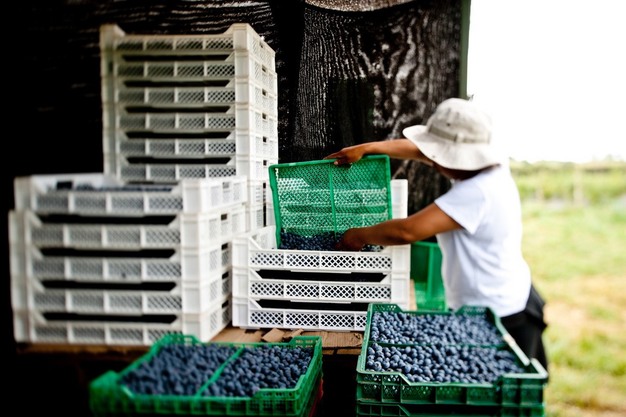The Chilean Blueberry Committee of ASOEX, together with iQonsulting, has estimated a volume of 82,000 tons of fresh blueberries for the 2023/24 season. This represents a six percent decrease in fresh exports from the previous year. Updated estimates will be released throughout the Chilean Blueberry season.
 Estimates are for a volume of 82,000 tons of fresh blueberries for the 2023/24 season.
Estimates are for a volume of 82,000 tons of fresh blueberries for the 2023/24 season.
“The decrease is due in large part to ongoing varietal replacement that is taking place within the Chilean blueberry industry,” says Andres Armstrong, executive director of the Chilean Blueberry Committee. “Growers have uprooted 1,164 hectares of old varieties with lower productivity and poor postharvest life, and have replaced it with 607 hectares of new varieties. We now have a total of 18,071 hectares, which is two percent less than 2022, but the move toward new varieties is incredibly positive for the industry.”
"Newly planted varieties comprise 20 percent of the planted area and we expect that this will only increase in the coming years,” added Armstrong. He adds that varieties that have good productivity but are weaker post-harvest are being diverted to the frozen market, an attractive alternative for some producers.
Armstrong says that the strategy adopted by the Blueberry Committee and its associated companies is focused on renewing varieties and generating more efficient production management and logistical services. This will facilitate the arrival of consistent quality fruit to the markets at competitive costs.
 Armstrong says that varieties that have good productivity but are weaker post-harvest are being diverted to the frozen market.
Armstrong says that varieties that have good productivity but are weaker post-harvest are being diverted to the frozen market.
There have been reports of Peru’s volume decline due to the impact of El Niño, with some discussion about how this might impact the overall market and Chile, more specifically. Armstrong emphasized that the Chilean blueberry industry is not speculating on what might happen with the Peruvian supply in December and January. “We have a unique opportunity to show our global markets that Chile is a necessary part of their global blueberry supply, and that is what our exporters are focusing on,” he says.
Regarding the effect of El Niño on Chilean blueberries thus far, Armstrong noted that it would appear to be minimal. The intense rains in regions with a significant acreage of blueberries occurred before flowering, so there is little impact on production. Also, the lower accumulation of cold hours, a phenomenon that has strongly affected blueberry production in Peru, will have a lesser impact in Chile since it occurred in regions that produce small volumes of blueberries. The Chilean Blueberry Committee is continually monitoring the impact of weather conditions on blueberries and will issue any relevant updates to keep its global customers informed.
 For more information:
For more information:
Karen Brux
Chilean Fresh Fruit Association
Tel: +1 (650) 218-5061
[email protected]
https://fruitsfromchile.com/










